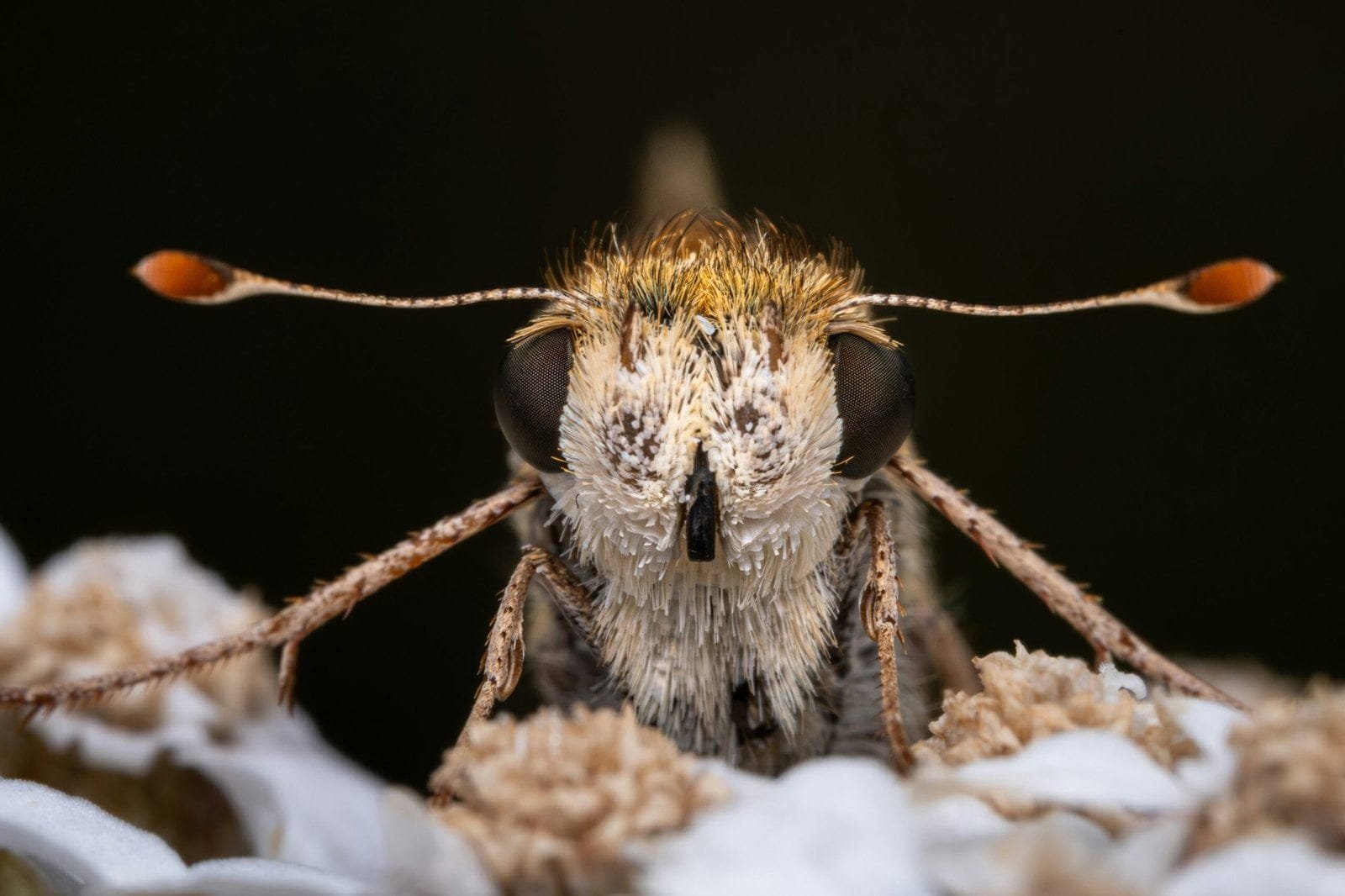Understanding Pyralids: What Are They?
Pyralids, commonly referred to as snout moths, belong to the family Pyralidae. They are a diverse group of moths that can be found in various regions worldwide. These moths are notorious for their larval stages, where they pose significant threats to a wide range of plants, making them a concern for gardeners and agriculturalists alike.

Pyralids vary in appearance, but they generally have slender bodies with wingspans ranging from 9 to 37 millimeters. Their coloration can be quite diverse, often featuring shades of brown, grey, or white, sometimes with intricate patterns. One of the distinguishing features of many pyralid species is their elongated mouthparts, or “snouts,” which give them their common name.
Please, read our post and do not forget to check our YouTube channel “Grig Stamate”:
https://www.youtube.com/@GrigStamate
You will find there, thousands of designing, furnishing, and decorating ideas for your home interior and outdoors.
Allow me to mention one of them:
Beautiful Gardens and Flower Gardens | OUTDOOR DECOR & LANDSCAPING IDEAS #12 (video)
The life cycle of pyralids typically consists of four stages: egg, larva (caterpillar), pupa, and adult. The larval stage is the most destructive, as the caterpillars feed on plant materials, causing significant damage. Depending on the species and environmental conditions, pyralids can have multiple generations per year, which can compound the damage to plants.
Several species of pyralids are particularly problematic in gardens and agricultural settings. For instance, the European corn borer (Ostrinia nubilalis) is a well-known pest that targets corn and other crops. The Indian meal moth (Plodia interpunctella), while more commonly associated with stored products, can also infest garden plants. Another example is the box tree moth (Cydalima perspectalis), which specifically targets boxwood plants, leading to severe defoliation and even plant death if left unchecked.
Pyralids are not selective in their diet and can infest a wide variety of plants. They are known to attack vegetables, fruits, ornamental plants, and even trees. Because of their broad host range and destructive feeding habits, early identification and control are crucial in managing pyralid infestations and minimizing damage to plants.
Identifying Pyralid Damage
Recognizing pyralid damage on your plants is crucial for early intervention and effective management. Pyralid moths, belonging to the family Pyralidae, are known to cause significant harm to a variety of plants, particularly in their larval stage. One of the primary indicators of pyralid infestation is the presence of chewed leaves. As the larvae feed, they create irregularly shaped holes, leaving a tattered appearance. These feeding patterns are typically concentrated along the edges of the leaves but can also occur across the leaf surface.
In addition to chewed leaves, pyralid larvae often attack fruits and vegetables. This damage manifests as small to medium-sized holes, often accompanied by frass (larval excrement), which can compromise the quality and marketability of the produce. Gardeners should inspect fruits such as tomatoes, peppers, and squash for these telltale signs, as early detection can prevent extensive crop loss.
The presence of larvae is another critical symptom of pyralid damage. These larvae are usually small, caterpillar-like insects that can vary in color from green to brown, often with distinct striping or spotting. They are typically found on the undersides of leaves or within the fruit itself. The larvae are most active during the night, making daytime identification more challenging. However, plants may exhibit additional clues such as silk webbing, which the larvae produce as they move and feed. This webbing can be seen on leaves, stems, and fruits, providing a clear indication of pyralid activity.
Visual aids can significantly assist in identifying pyralid damage. Photographs or illustrations of affected plants, larvae, and webbing can provide gardeners with a reliable reference. By familiarizing themselves with these common symptoms, gardeners can take swift action to mitigate the impact of pyralid moths on their plants, ensuring healthier and more productive gardens.
Preventative Measures: Protecting Your Plants
Protecting your plants from pyralid infestations requires a comprehensive approach that includes choosing resistant plant varieties, maintaining garden hygiene, and implementing effective crop rotation strategies. These measures can significantly reduce the risk of pyralid damage and ensure the health and productivity of your garden.
One of the primary strategies to prevent pyralid infestations is to select plant varieties that are resistant to these pests. Resistant plants have natural defenses that make them less attractive or more difficult for pyralids to infest. When planning your garden, research and choose varieties known for their resistance to pyralid species, which can significantly decrease the likelihood of an infestation.
Maintaining garden hygiene is another essential preventative measure. Regularly remove plant debris, weeds, and other organic matter that can harbor pyralids or their eggs. Proper sanitation reduces the availability of breeding grounds for these pests. Additionally, ensure that your garden tools are clean and disinfected to prevent the spread of any potential infestations from one plant to another.
Implementing crop rotation is a time-tested method to manage and prevent pyralid infestations. By rotating crops and avoiding planting the same species in the same location year after year, you disrupt the life cycle of pyralids and reduce the chances of them establishing a foothold in your garden. This practice not only helps in managing pyralids but also improves soil health and fertility.
Regular monitoring of your plants is crucial for early detection and management of pyralid infestations. Inspect your plants frequently for signs of damage, such as chewed leaves or visible larvae. If you notice any infected parts, remove and dispose of them immediately to prevent the infestation from spreading. Early intervention can make a significant difference in controlling pyralid populations and protecting your plants.
Biological Control Methods
One of the most effective and environmentally friendly ways to manage pyralid infestations in your garden is through biological control methods. Biological control leverages natural predators and parasites to keep pyralid populations in check without the need for harmful chemical pesticides. These natural agents not only help in controlling the pest population but also contribute to the overall health of your garden ecosystem.
Trichogramma wasps are among the most efficient natural predators of pyralid moths. These tiny parasitic wasps lay their eggs inside the moth eggs, preventing the larvae from hatching. By introducing trichogramma wasps into your garden, you can significantly reduce pyralid numbers. These wasps are readily available from various biological supply companies and can be released in your garden during the early stages of pyralid activity for optimal results.
Nematodes, especially the species Steinernema carpocapsae, are another valuable ally in the fight against pyralids. These microscopic worms infect and kill pyralid larvae living in the soil. They can be applied to the garden through a simple soil drench or mixed with water and sprayed on affected plants. Nematodes are particularly useful for targeting pyralid larvae before they mature into moths, thus breaking the pest’s lifecycle.
Encouraging the presence of beneficial insects and organisms can also enhance biological control efforts. Planting nectar-rich flowers like dill, fennel, and yarrow can attract predatory insects such as ladybugs and lacewings that feed on pyralid larvae and eggs. Maintaining a diverse plant environment supports a balanced ecosystem, making it harder for pyralid populations to explode.
Using biological control methods offers several advantages over chemical pesticides. These methods are environmentally sustainable, do not harm beneficial insects or pollinators, and reduce the risk of pesticide resistance in pest populations. By integrating natural predators and parasites into your pest management strategy, you can effectively control pyralids while promoting a healthy and thriving garden.
Organic Pesticides and Home Remedies
Dealing with pyralid damage to your plants can be challenging, but turning to organic pesticides and home remedies provides a safe, eco-friendly alternative to synthetic chemicals. These solutions not only protect your plants but also ensure the surrounding environment remains unharmed.
One effective organic pesticide is neem oil. Neem oil contains azadirachtin, which disrupts the life cycle of pests. To make a neem oil spray, mix two teaspoons of neem oil and one teaspoon of liquid soap with one liter of water. Shake well before spraying it on your plants, focusing on the undersides of leaves where pyralids tend to hide. Apply this solution weekly for best results.
Garlic spray is another potent remedy for deterring pyralids. Garlic contains sulfur compounds that act as a natural pesticide. To prepare garlic spray, blend two bulbs of garlic with four cups of water. Let the mixture sit overnight, then strain and dilute it with an additional four cups of water. Add a few drops of liquid soap to help the solution adhere to the plant leaves. Spray this mixture on your plants every few days to keep pyralids at bay.
Diatomaceous earth, a natural powder made from fossilized remains of diatoms, is a highly effective home remedy. When pyralids come into contact with diatomaceous earth, it damages their exoskeletons, leading to dehydration and death. To use, lightly dust your plants with food-grade diatomaceous earth, ensuring coverage on both sides of the leaves. Reapply after watering or heavy rainfall for continued protection.
These organic pesticides and home remedies offer practical, environmentally friendly options for managing pyralid infestations. By integrating solutions like neem oil, garlic spray, and diatomaceous earth into your plant care routine, you can effectively protect your plants from pyralids without resorting to harmful synthetic chemicals.
Chemical Control: Last-Resort Options
When all other methods to combat pyralid damage have proven ineffective, the use of chemical pesticides may become a necessary, albeit last-resort, option. Selecting the appropriate chemical product is critical to ensure effective control while minimizing harm to the environment and non-target organisms. It is advisable to consult with a local agricultural extension service or a professional pest control expert to identify the most suitable pesticide for your specific situation.
Once an appropriate pesticide has been selected, it is essential to follow the instructions on the product label meticulously. Safe application practices entail wearing protective gear, such as gloves and masks, to prevent direct exposure to the chemicals. Additionally, applying pesticides during times when beneficial insects, such as bees, are less active can help mitigate unintended impacts on these important species.
Applying pesticides precisely is crucial. Spot treatments are often more effective and less harmful than broad applications. This approach limits the chemical exposure to the targeted area, reducing potential runoff into nearby water sources and preventing contamination of non-target plants and organisms. Furthermore, it is important to adhere to recommended dosages and avoid over-application, which can lead to pesticide resistance in pyralid populations and increased toxicity in the environment.
Understanding the potential risks associated with chemical pesticide use is vital. These chemicals can pose significant threats to ecosystems, including soil health, water quality, and the wellbeing of beneficial insects and wildlife. Therefore, integrating chemical controls with other pest management strategies, such as biological and cultural methods, can provide a more balanced and sustainable approach to managing pyralid damage.
In summary, while chemical pesticides can be an effective tool in the fight against pyralid damage, their use should be reserved for situations where other methods have failed. By carefully selecting appropriate products, practicing safe application techniques, and being mindful of environmental impacts, gardeners and farmers can protect their plants while preserving the integrity of the surrounding ecosystem.
Ensuring the overall health of your plants is pivotal in making them less susceptible to pyralid damage. A strong and thriving plant can resist many pests, including pyralids. The foundation of plant health begins with proper watering practices. Overwatering or underwatering can stress plants, making them more vulnerable to pest infestations. Aim to water your plants deeply and infrequently, allowing the soil to dry out between watering sessions. This practice encourages root growth and helps plants develop a robust root system.
Fertilization is another critical aspect of maintaining plant health. Plants require a balanced supply of nutrients to grow strong and resist pests. Use a high-quality, slow-release fertilizer to ensure your plants receive a steady supply of essential nutrients over time. Organic fertilizers, like compost or well-rotted manure, can also improve soil structure and fertility, providing plants with a more resilient growing environment.
Pruning is essential for the health and vigor of your plants. Regularly remove dead or diseased branches and foliage to prevent the spread of pathogens and pests. Pruning also improves air circulation within the plant canopy, reducing humidity and the likelihood of pyralid infestations. Ensure you use clean, sharp tools to make precise cuts, minimizing damage to the plant tissue.
Soil management is equally important in maintaining plant health. Healthy soil supports strong root growth and provides a habitat for beneficial microorganisms that can help control pest populations. Regularly test your soil to monitor its pH and nutrient levels. Amend the soil with organic matter to improve its structure, drainage, and nutrient-holding capacity. Mulching is another effective practice; it helps retain soil moisture, suppress weeds, and regulate soil temperature, creating a more stable environment for your plants.
By focusing on these key aspects of plant care—watering, fertilization, pruning, and soil management—you can significantly enhance the health of your plants, making them more resilient to pyralid damage and other potential threats.
Seasonal Tips and Best Practices
Maintaining the health of your garden to avoid pyralid damage requires a strategic approach tailored to each season. By implementing specific actions throughout the year, you can significantly reduce the risk of infestation and ensure the vitality of your plants.
Spring
Spring is a crucial time for preparing your garden against pyralid threats. As temperatures rise, it’s essential to inspect your plants regularly for early signs of pyralids. Begin by cleaning up any garden debris and removing any weeds, as these can serve as breeding grounds for pests. Incorporate organic compost into the soil to enhance plant health, making them less vulnerable to attacks. Additionally, consider planting companion plants that naturally repel pyralids, such as marigolds and basil.
Summer
During the summer months, pyralid activity typically peaks due to the warmer weather. Regular monitoring of your plants is essential, focusing on the undersides of leaves where pyralids often lay their eggs. Implementing a weekly inspection routine can help identify and address infestations early. Utilize organic insecticides if necessary, ensuring they are safe for beneficial insects. Additionally, maintaining proper watering schedules is vital, as stressed plants are more susceptible to damage. Employing mulch can also help retain soil moisture and reduce stress on plants.
Fall
In the fall, as temperatures begin to drop, it’s essential to continue monitoring your garden for any lingering pyralid activity. Remove any infested plants and dispose of them properly to prevent overwintering pests. This is also an ideal time to apply a layer of organic mulch to insulate the soil and protect plant roots. Pruning dead or damaged branches can improve air circulation and reduce the chances of pest infestations. Planting cover crops can enrich the soil and provide a natural barrier against pyralids.
Winter
Winter is a period of dormancy for most gardens, but it is still important to take preventive measures against pyralids. Clean and sanitize garden tools and equipment to eliminate any potential eggs or larvae. Planning for the upcoming growing season can include researching resistant plant varieties and ordering seeds early. Additionally, consider using row covers or other physical barriers to protect plants from early spring infestations. Regularly check stored produce for signs of pyralid damage and ensure proper storage conditions.
By following these seasonal tips and best practices, you can effectively manage pyralid threats and maintain a healthy, thriving garden throughout the year.
Other related posts from our website:
https://howtobuildahouseblog.com/how-to-keep-pests-out-for-the-winter/
https://howtobuildahouseblog.com/keep-your-garden-free-from-pests/
Thank you so much for your attention.
Stay tuned. We will upload many other amazing posts to our website and videos onto our YouTube channel.
Thank you so much.
for your time and attention.
Best Regards
See you to another post,
Bye, Bye


